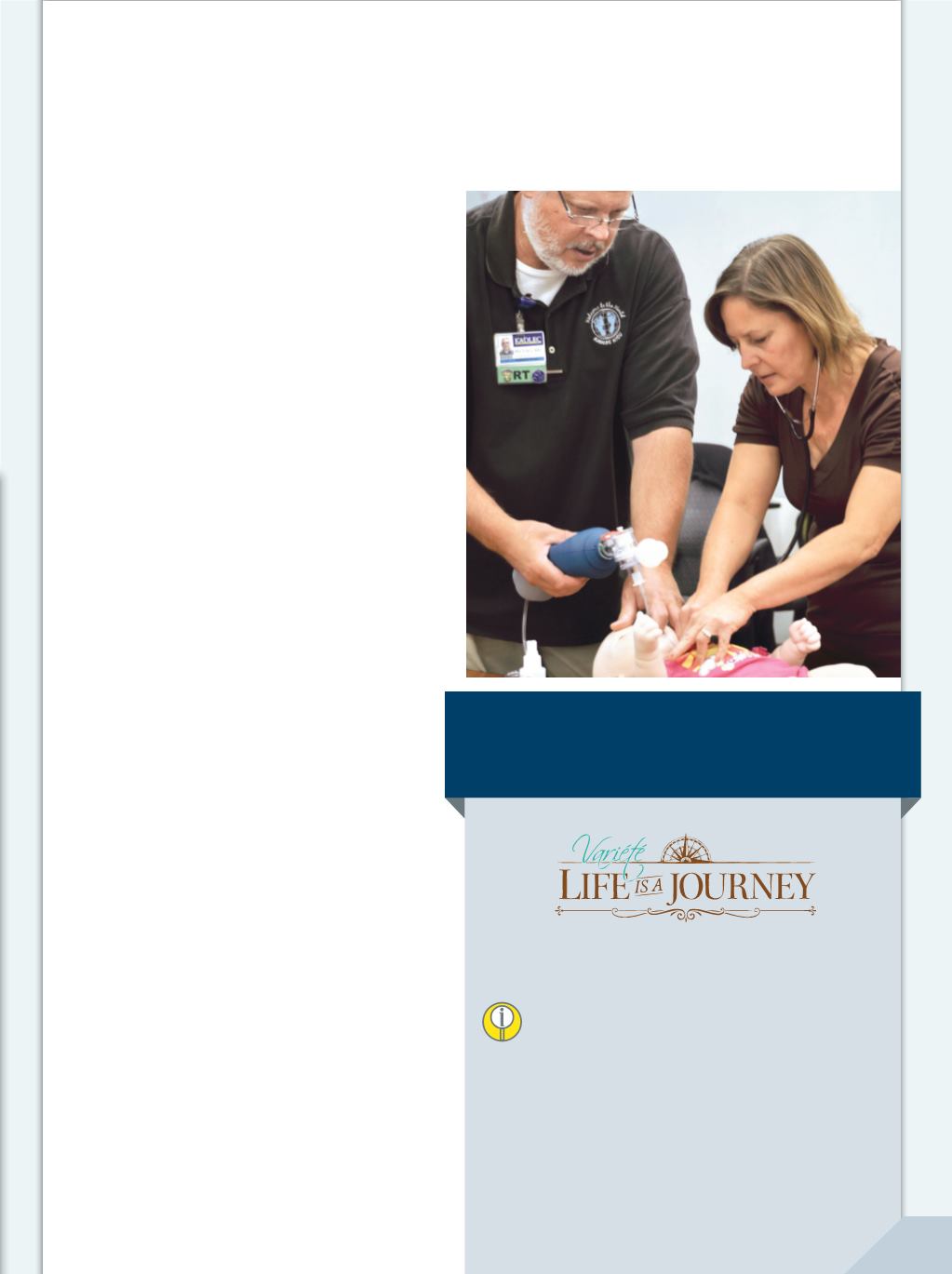
Manikin simulator training strengthens
pediatric and adult code teams
Kadlec Neurological
Resource Center
Save the date
March 7, 2014
The annual auction and dinner to benefit Kadlec
Neurological Resource Center.
For more information, call
(509) 943-8455
or visit
Throughout 2014, Kadlec Neurological Resource Center
will also offer a series of educational presentations focusing on
Alzheimer’s disease,“Food & the Brain”and theMTHFR gene.
For a complete schedule of these and other
Kadlec Neurological Resource Center events, visit
To sign up for Kadlec Neurological Resource Center’s
newsletter,
NeuroTransmitter
, call
(509) 943-8455
.
A NURSE AT
the Don and Lori Watts Pediatric Center
nds one of her small patients not breathing properly
and, as a result, turning blue. She immediately pushes
the emergency button, and Kadlec’s pediatric code team
jumps into action.
Fortunately, scenarios such as this one rarely take
place, particularly for pediatric patients. However,
when they do, what happens in the first few minutes
requires lifesaving action by a highly skilled team.
Training these teams at Kadlec Regional Medical Center,
both for adult and pediatric care, has taken a step
forward with the purchase of two lifelike simulators,
one adult and one pediatric.
Medical simulation has a long history, but the rapid
technological advances have brought a remarkable
realism to the science of simulation. Human patient
simulators can be programmed to exhibit the signs and
symptoms of virtually any medical condition with real-
time progression and response rates. The simulators
possess lifelike features including pulse, blood
pressure, temperature, respiration rate, heart and lung
sounds, blood and urine return, glucose tolerance, as
well as the ability to sweat, drool, froth and cry.
“These manikins simulate a real patient and present
real-life care situations,” said Kirk Harper, vice president
of Nursing. “They allow members of Kadlec’s code
teams to recognize and manage a wide assortment of
medical conditions and to build and sharpen skills —
all with the goal of being more effective responders to
patients.
“The teams see real value in this training. They learn
what to expect of each other, to trust each other, how
to communicate effectively with each other, and to
practice important skills side-by-side,” he said.
The infant simulator provides training for care of
children from 6 months to up to 10 years of age.
“Pediatric patients are not little adults,” said Harper.
“The importance of this simulator is to help teams
handle code situations for pediatric patients who do
not react in the same way an adult reacts. They require
different procedures and responses. This simulator
walks them through these situations.”
The infant simulator was made possible with donor
contributions to Kadlec Foundation.
“The Foundation has been instrumental in
supporting the care of our youngest patients in this
region. This is just one more important example of that
support,” he said.
3


